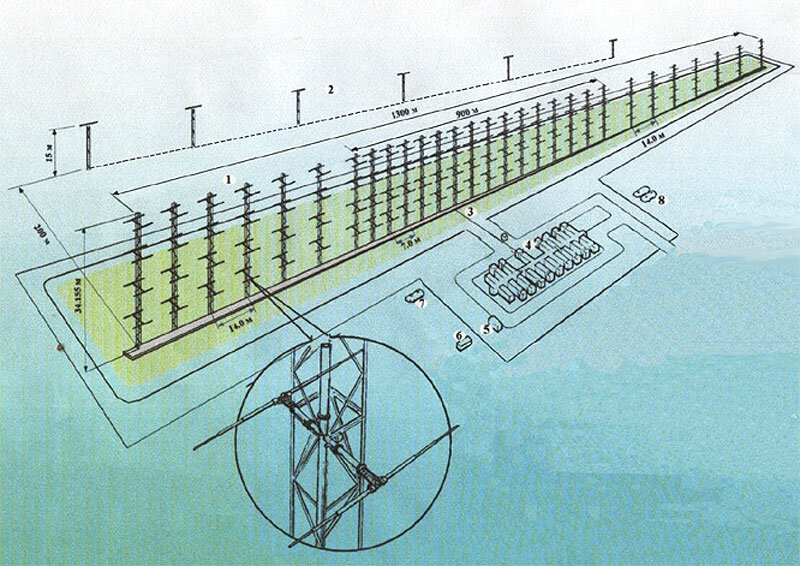In the Ukrainian press, there is a report circulating with reference to sources in the Defense Intelligence of Ukraine, stating that on April 17th, Ukrainian kamikaze drones attacked a russian military facility in Mordovia for the second time.
There is located a separate radio technical unit of military unit 84680, and it operates an over-the-horizon radar station designated as 29B6 Container, which has a claimed detection range for airborne targets up to 3000 kilometers. Against this backdrop, it may seem paradoxical that Ukrainian UAVs even reach such a target of the russian invaders, which is designed to detect airborne targets up to 3000 kilometers away. In addition, simultaneously, the Ukrainian Defense Forces are targeting such a military object of the enemy, which is located at a very significant distance from the current front line. Moreover, at the same time, the Ukrainian Defense Forces have targeted such a military object of the enemy, which is located at a very significant distance from the current front line.
Read more: On Wednesday Morning, Explosions Rang Out at the russian Dzhankoi Air Base in Temporarily Occupied Crimea

Let us figure out how many years it took to manufacture and deploy such a radar station on combat duty. The data available indicates that the development and manufacturing of the 29B6 Container took place from 1995 to 2000, with testing and subsequent refinement of this station to the required condition occurring from 2002 to 2012. Moreover, it was only in 2012 that the russian Ministry of Defense officially announced the commissioning of the 29B6 Container over-the-horizon radar for "experimental-combat duty," with the "full-scale" combat duty of this station, according to russian propagandists, started only in 2019.

This is essentially the most powerful radar in the possession of the russian federation; it currently exists only as a singular instance.
As of the same year, 2012, there were announcements about the plans of the russian Ministry of Defense to deploy a second 29B6 Container station in the Far East with the deadline for combat duty set for 2018. However, in 2020, this deadline was pushed back to 2024.
So once again, in the case of the first (and currently only) instance of the 29B6 Container, which has already been targeted twice by our UAVs, the timeline from the start of development to full combat duty has taken almost 15 years. And this is against the backdrop of evident problems with the construction of a second such station.

When it comes specifically to the characteristics of the 29B6 Container, the picture becomes even more interesting.
First of all, russian propagandists themselves, in one of the publications dating back to 2020, acknowledged that this station has a "dead zone" of surveillance of approximately 900 kilometers, which is why they allegedly relocated it deep into russian territory, all the way to Mordovia.

If this figure of a "dead zone" of 900 kilometers is accurate, it may suggest how the russians could have "missed" the flight of our drones to strike the Container.
The 29B6 Container is capable of conducting continuous monitoring of the airspace of Ukraine in the interests of the russian army. Therefore, striking and disabling this enemy object is important precisely to improve the defense of Ukrainian airspace.
Read more: Another S-400 SAM System Likely to Destroy In Result of Ukraine’s Missile Strike on russia’s Dzhankoi Air Base














